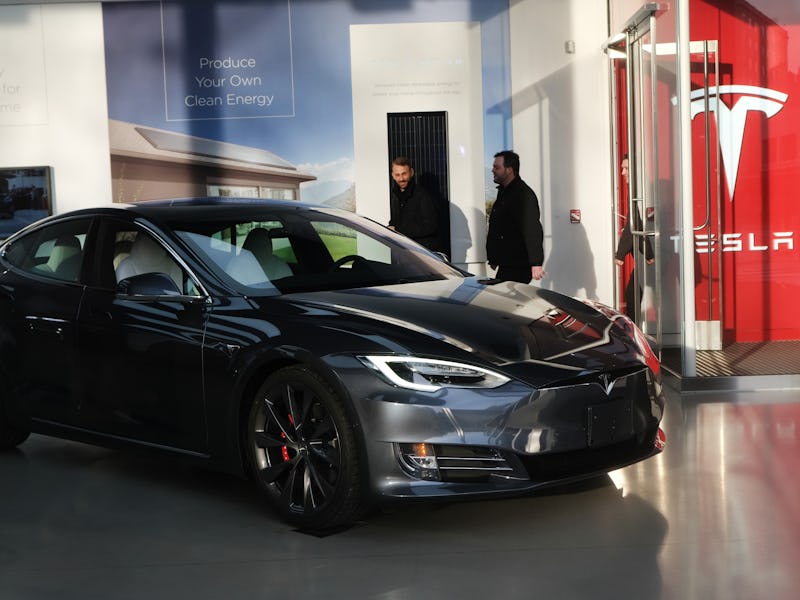Musk Reads: Tesla April event detailed
Tesla faces the biggest problem in electric cars, new Solar Roof upgrades look set to launch, and The Boring Company leaves Las Vegas divided.

Tesla faces the biggest problem in electric cars, new Solar Roof upgrades look set to launch, and The Boring Company leaves Las Vegas divided. It’s Musk Reads: Tesla Edition #142.
A version of this article appeared in the “Musk Reads” newsletter. Sign up for free here.
Musk quote of the week
“Tesla April company talk will be from our Giga New York factory, where we make SolarGlass & several other products. Will also offer customer & media tours.”
- Read more about Musk’s latest reveal. Then find out more about the previously announced April Battery Day, aimed at detailing the company’s advancements in battery technology.
Tesla
Tesla is facing a big problem in electric cars by not making enough batteries to satisfy demand. While the company was producing around 35 gigawatt-hours of storage per year by July 2019, Musk has spoken about reaching terawatt-hour levels. Analysts estimate the whole world will produce less than that by the middle of the 2020s. But Tesla has already put the brakes on mass Semi truck production due to a lack of cells, and the Solar Roof previously saw delays due to the Model 3 ramp-up. Tesla needs more batteries, and its April event may provide more information about where it will find them. Read more.
A Gigafactory on every continent? It could solve another of the company’s biggest problems. Musk has already switched on Giga Nevada, Giga New York, and Giga Shanghai. He’s also announced a Giga Berlin and suggested a Giga Texas. Placing factories close to the consumer helps reduce shipping times and complexity, Musk explained. Read more.
Giga Shanghai, built to produce entry-level Model 3 and Model Y cars for the Chinese market, resumed production on Monday. The factory had been closed since January 29 due to the coronavirus outbreak.
Tesla solar
Expect more Tesla Solar Roof upgrades later this year. Musk claimed this week that new colors should “hopefully” launch soon. Musk also expressed interest in heating systems to remove snow from the top. Tesla’s third-generation tiles were unveiled in October 2019. Read more.
What’s next for Tesla: Tesla is expected to start shipping the Model Y in March.
The Boring Company
The tunnel-digging firm is about to meet the halfway mark on its first project in Las Vegas, but public opinion is divided. Richard N. Velotta, assistant business editor for the Las Vegas Review Journal, told Inverse this week that “those who are opposed are extremely opposed” and vice versa, with “no middle-of-the-road.” The $52.5 million two-mile tunnel is expected to ferry people across the Las Vegas Convention Center in time for next January’s annual Consumer Electronics Show. The system will offer passenger cars built on a Tesla chassis, holding up to 16 people. Big questions remain, however, around logistics like how passengers will board the vehicles. Read more.
Musk Reads mailroom
Gordon Harter writes:
Has Tesla made any effort/headway selling its charging technology, or battery technology, to other manufacturers, in an effort to get the industry to standardize on, or at least more broadly adopt, Tesla’s designs, to increase utilization of the charging network, and/or increase sale opportunities for Tesla components? They could do this through licensing the technology for others to manufacture. Or they could OEM the parts to those manufacturers. Get a ‘TESLA INSIDE’ campaign going.
You’re not the first person to call for this. Jason Perlow over at ZDNet made the same argument in March 2019. Tesla opened its patents for all to use in June 2014 in a bid to encourage others to use its tech, and Musk has claimed that other automakers are welcome to pay for access to the supercharger network. But nobody has accepted the supercharger offer as it stands, and Tesla has shown little sign that it’s interested in diverging from its current strategy to license the other parts of its tech.
Vern Voss writes:
I am wondering why Tesla chose to only have the options of rear wheel drive or all wheel drive. Most vehicles have either FWD or AWD. I believe Tesla would be more price competitive if it offered FWD for the more price sensitive customers. FWD is more efficient and better in northern/snowier areas. If Tesla can produce a Model Y at a competitive cost in a FWD version than the Ford Mach E then Tesla can be competitive and have the advantage of the supercharger network.
While front-wheel drive makes sense in a traditional car with an engine at the front, in an electric car, the weight is more evenly distributed. This means, if anything, rear-wheel drive could prove a better use of resources as the weight shifts back. In fact, Volkswagen executive Matthew Renna suggested in December 2018 that the electric car could spell the end of front-wheel drive.
Got any comments or queries? Don’t forget to send them over to muskreads@inverse.com.
Video of the week
The very early stages of Giga Berlin.
Got a photo or video you’d like to see featured? Send it over to muskreads@inverse.com!
The ultra-fine print
This has been Musk Reads: Tesla Edition #142, the weekly rundown of essential reading about futurist and entrepreneur Elon Musk. I’m Mike Brown, an innovation journalist for Inverse.
- Email me directly at mike.brown@inverse.com and follow me on Twitter @mikearildbrown.
- Follow Inverse on Twitter @inversedotcom.
- Got any comments or queries? Don’t forget to send them over to muskreads@inverse.com.
A version of this article appeared in the “Musk Reads” newsletter. Sign up for free here.